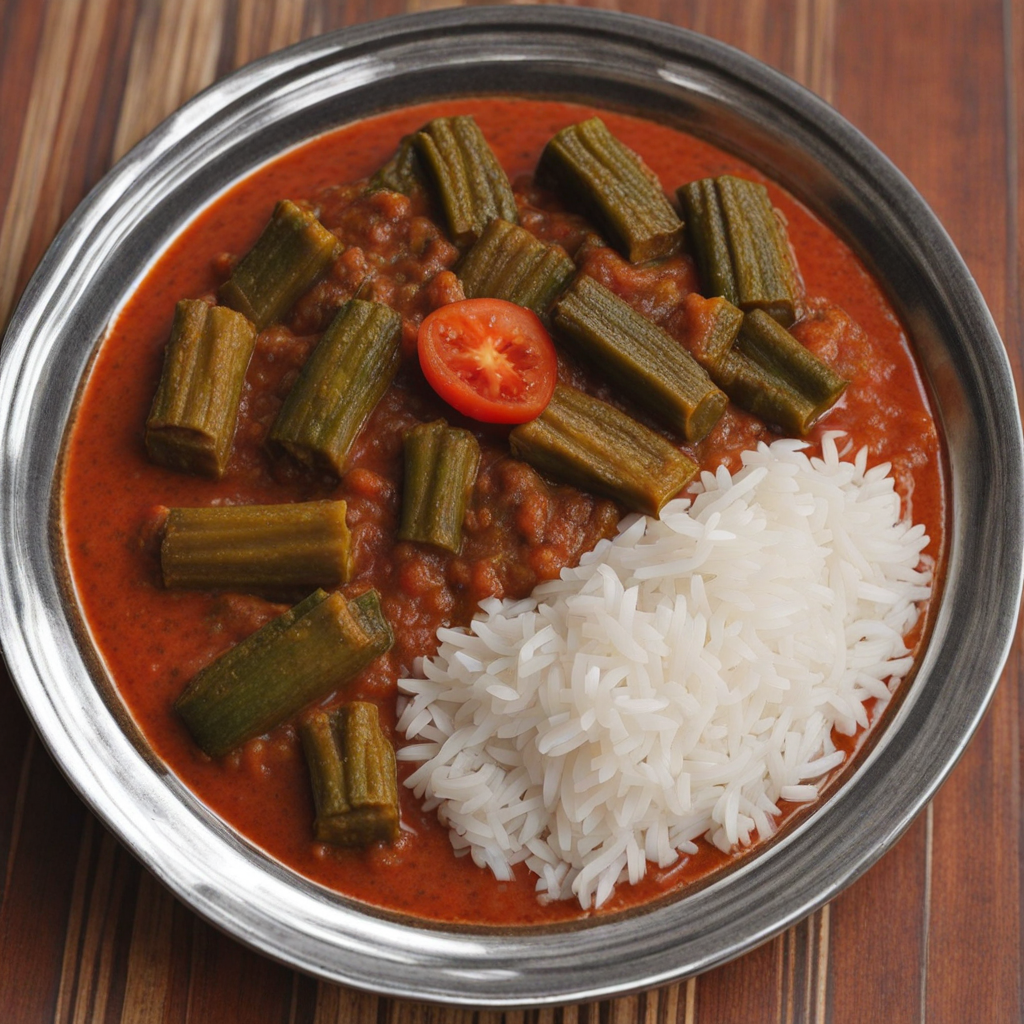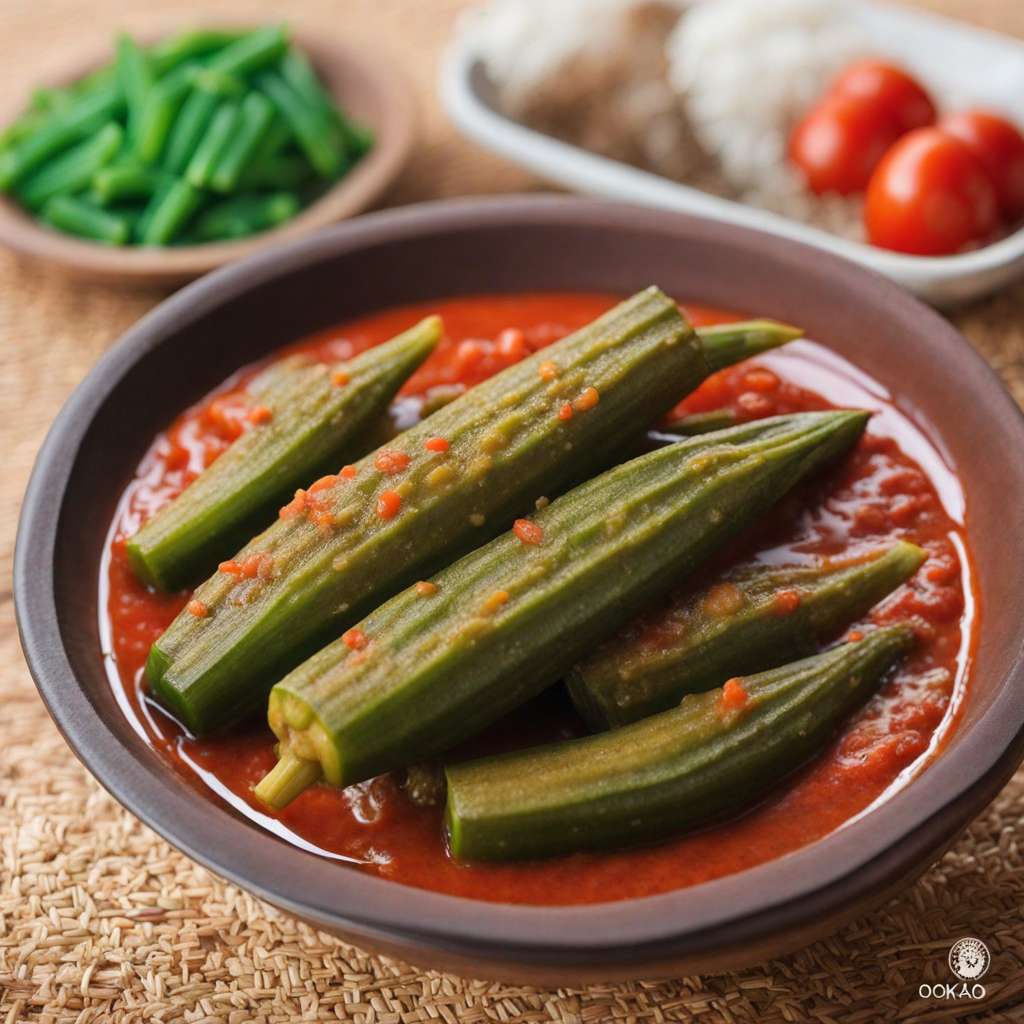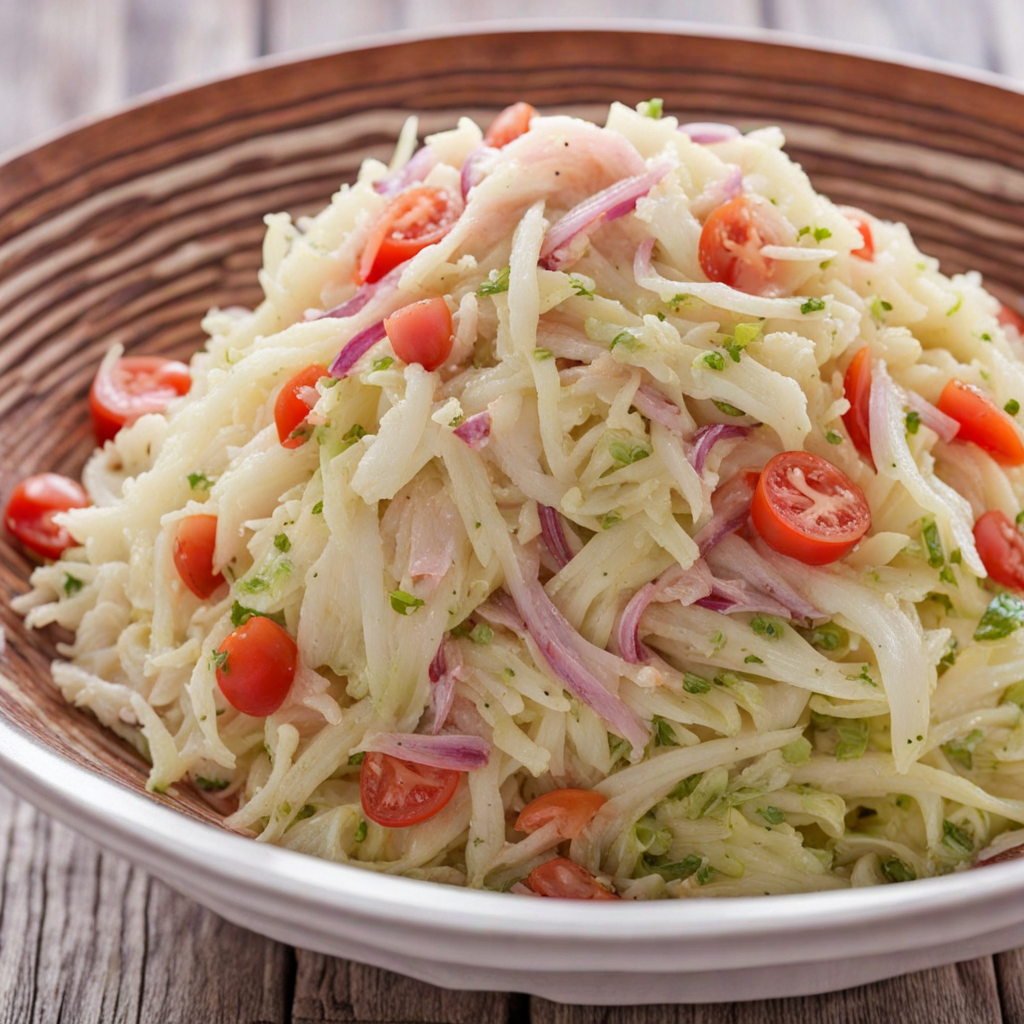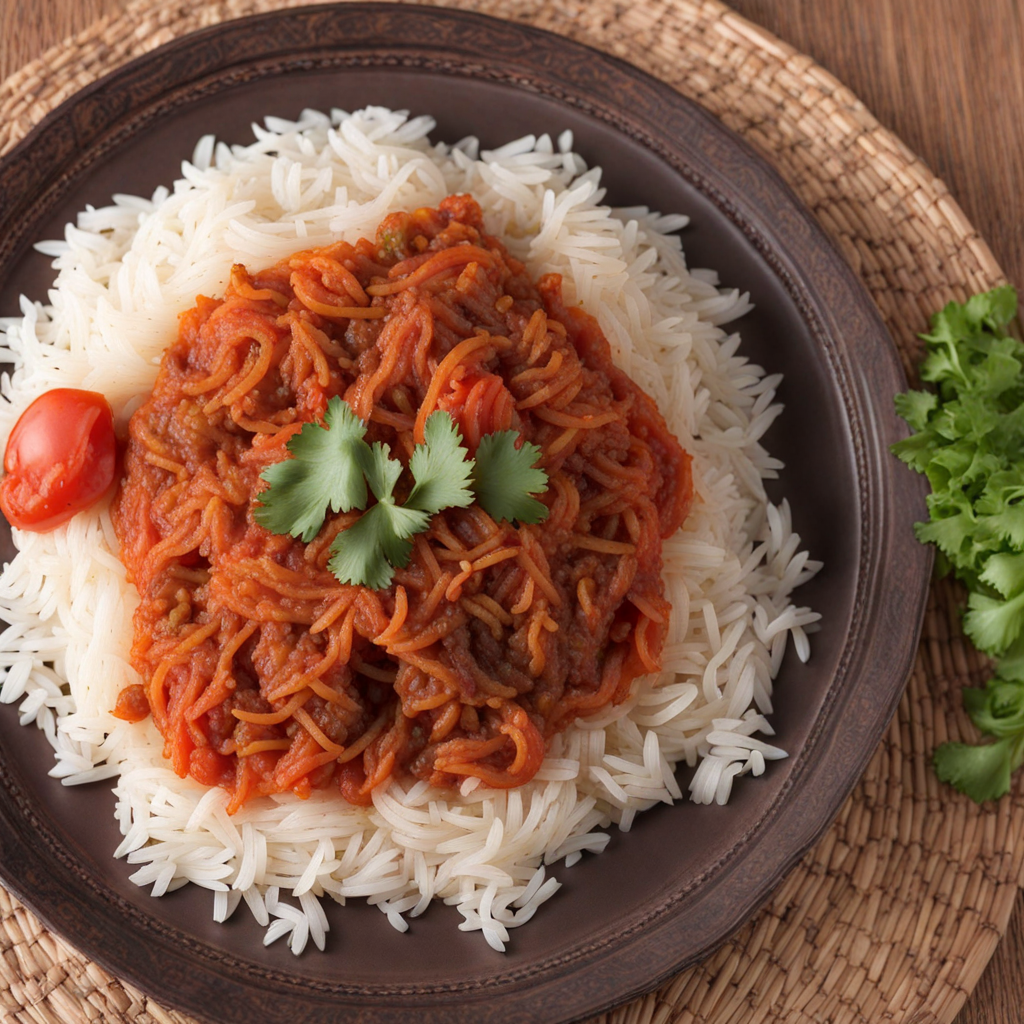Sauce Gombo
Sauce Gombo is a traditional dish from Burkina Faso that showcases the rich flavors and vibrant ingredients of West African cuisine. At its core, Sauce Gombo features okra, a versatile vegetable known for its unique texture and ability to thicken dishes. This sauce is often prepared with a combination of tomatoes, onions, and a variety of spices that create a warm and inviting aroma. The okra gives the dish a slightly viscous consistency, which beautifully complements the other ingredients, making it a delightful accompaniment to rice or a starch of your choice. In addition to its main ingredient, Sauce Gombo can also include protein sources such as fish, chicken, or meat, enriching the dish with savory flavors. The use of local spices adds depth and complexity, often blending hints of garlic, ginger, and chili to create a balanced heat. The sauce is typically simmered slowly to allow the flavors to meld together, resulting in a hearty and satisfying meal that reflects the culinary traditions of the region. What sets Sauce Gombo apart is not just its taste, but also its cultural significance. It is often enjoyed during gatherings and family meals, symbolizing togetherness and community. The dish is a testament to the agricultural bounty of Burkina Faso, where fresh and locally-sourced ingredients play a vital role in everyday cooking. For anyone looking to explore new tastes, Sauce Gombo offers an authentic experience that captures the essence of West African flavors and hospitality.
How It Became This Dish
Sauce Gombo: A Culinary Gem of Burkina Faso #### Origins and Ingredients Sauce Gombo, a traditional dish from Burkina Faso, showcases the rich agricultural heritage and culinary diversity of West Africa. The name "Gombo" is derived from "okra," the primary ingredient that gives this sauce its unique flavor and texture. Okra is believed to have originated in Ethiopia and has been adopted across various cultures, particularly in Africa, the Middle East, and the southern United States, where it is often associated with Creole cooking. In Burkina Faso, Sauce Gombo is an integral part of everyday life and is often enjoyed with staple foods like rice, millet, or fufu. The dish typically consists of okra cooked with a variety of ingredients, including tomatoes, onions, and sometimes meat or fish. The use of palm oil or vegetable oil for sautéing is common, which adds depth and richness to the sauce. Groundnut (peanut) paste is also a frequent addition, providing a creamy texture and enhancing the flavor profile. #### Cultural Significance The preparation and consumption of Sauce Gombo transcend mere nourishment; they embody the social fabric and cultural identity of the Burkinabé people. Food in Burkina Faso is deeply intertwined with community and family life. Cooking is often a communal activity, with women gathering to prepare meals, share stories, and pass down culinary traditions from one generation to the next. Sauce Gombo is frequently served during special occasions, such as weddings, festivals, and communal feasts, symbolizing hospitality and unity. In Burkinabé culture, the act of sharing food is a fundamental expression of goodwill and friendship. When Sauce Gombo is served, it is not just a dish; it is a gesture of love and a means of fostering connections among individuals and families. The vibrant greens of the okra and the colorful vegetables reflect the abundance of the land and the joy of communal gatherings. #### Development Over Time The history of Sauce Gombo is a reflection of the broader historical and socio-economic changes in Burkina Faso. The country, previously known as Upper Volta, has a rich tapestry of ethnic groups, including the Mossi, Gourmantché, and Bobo, each contributing to the culinary landscape. As these communities interacted through trade and migration, their culinary practices began to influence one another, leading to a fusion of flavors and techniques. During the pre-colonial era, agriculture was central to the livelihoods of the people in Burkina Faso. Millet, sorghum, and vegetables like okra were cultivated extensively. The introduction of new ingredients, such as tomatoes and chili peppers, during the colonial period, influenced the development of Sauce Gombo, as these ingredients became staples in Burkinabé cooking. The 20th century brought significant social and political changes to Burkina Faso, including independence from French colonial rule in 1960. This era saw a resurgence of pride in indigenous culinary practices. Chefs and home cooks alike began to reclaim traditional dishes like Sauce Gombo, celebrating local ingredients and flavors. The dish became a symbol of national identity, reflecting the resilience and creativity of the Burkinabé people. In contemporary Burkina Faso, Sauce Gombo continues to evolve while preserving its traditional roots. Urbanization and globalization have introduced new cooking methods and ingredients, allowing for experimentation and innovation. While some may choose to prepare a quicker version of the sauce using canned tomatoes or frozen okra, the essence of the dish remains intact—a blend of fresh, local ingredients that resonate with the flavors of the land. #### Modern Interpretations and Global Influence As the world becomes increasingly interconnected, Burkinabé cuisine, including Sauce Gombo, has gained recognition beyond its borders. Food enthusiasts and chefs are exploring the flavors of West Africa, leading to a revival of interest in traditional dishes. Sauce Gombo has made its way to international food festivals, gourmet restaurants, and cooking classes, allowing people from diverse backgrounds to experience this delicious dish. In addition to its culinary appeal, Sauce Gombo stands as a testament to the resilience of Burkinabé culture amid globalization. The dish serves as a reminder of the importance of preserving traditional practices while embracing innovation. Chefs today may incorporate local ingredients into the sauce or experiment with fusion cuisine, but the core values of community, sustainability, and heritage remain evident. #### Conclusion In conclusion, Sauce Gombo is more than just a dish; it is a vibrant reflection of the history, culture, and identity of Burkina Faso. From its humble origins rooted in local agriculture to its significance in communal gatherings, Sauce Gombo embodies the essence of Burkinabé cuisine. As the world continues to discover and appreciate the flavors of West Africa, Sauce Gombo stands as a delicious bridge between tradition and modernity, inviting all to savor its rich taste and cultural significance. As we explore the culinary traditions of Burkina Faso, let us celebrate Sauce Gombo not only for its deliciousness but for what it represents: resilience, community, and the unbreakable bond between food and culture.
You may like
Discover local flavors from Burkina Faso







